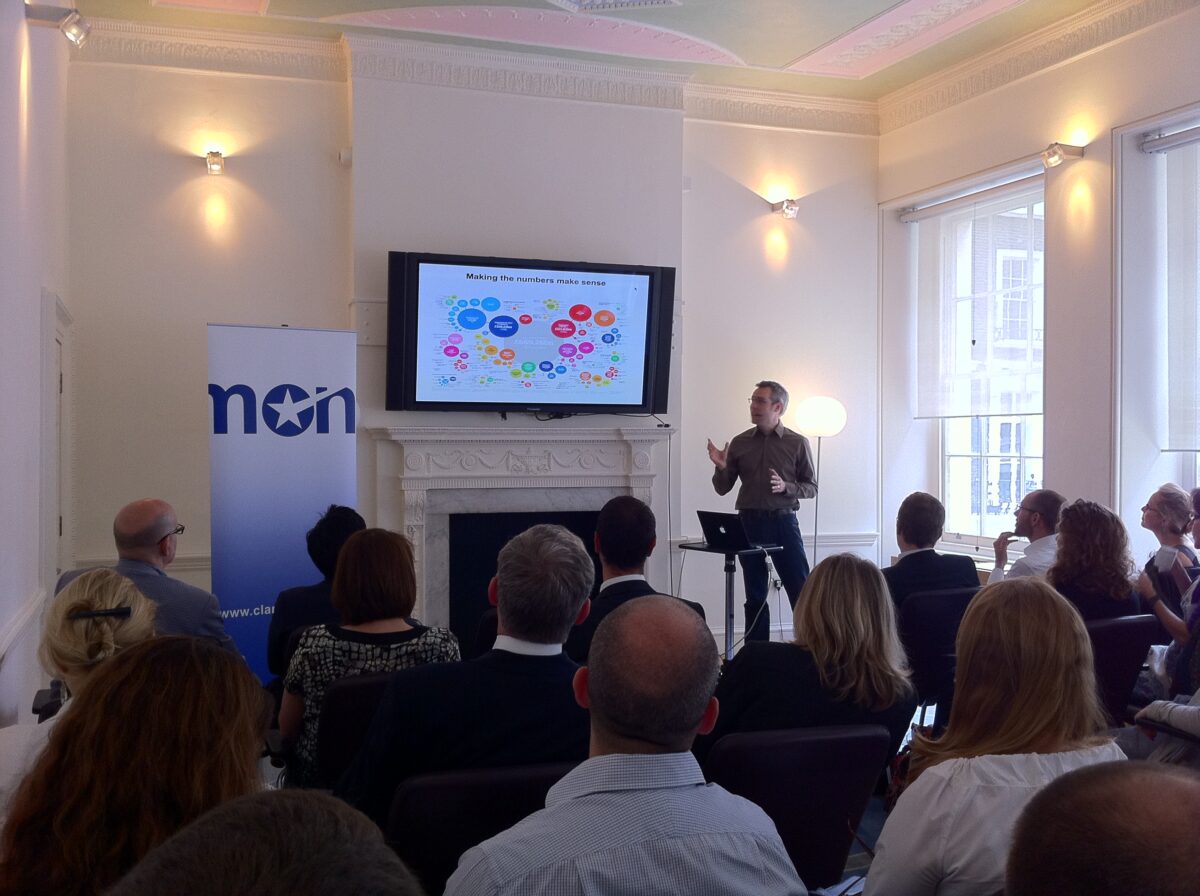Innovation vs Process. Social Media Ninjas vs IT Managers. Agile vs Waterfall. A few tidbits from the fringe of recent O’Reilly’s OSCON conference caught my eye in the last week or so, and helped me think about these age-old battles in a new way.
Simon Wardley‘s session takes a bit of following if enterprise IT isn’t your bread and butter, but is packed with rewarding gems, specifically using the lifecycle analysis curve (introduction, growth, maturity, stability, decline) as a model for understanding the respective roles and purpose of innovation and process: or why your fast-growing organisation seems to be getting more bureaucratic:
(hat tip, Dennis Howlett).
Rolf Skyberg, Head of Innovation at eBay has some great slides analysing innovation models, particularly mapping out the new idea development process, from ideation through filtering, implementation, integration and monetization – and that you can do it the conventional way or the innovative way, but at some point those tracks have to merge. It’s a fairly elementary point that corporate ‘innovation schemes’ generally fail to acknowledge, leading to frustration and waste. It applies to government crowdsourcing too: at what point does the innovation track merge with conventional policymaking and delivery – and what happens to good ideas along the way?
Doctor I Have A Problem With My Innovation – Rolf Skyberg – OSCON 2010
(hat tip: Dave Briggs)
I think lifecycle analysis and an understanding of how innovations become process (and how process is then in turn innovated) might help to resolve a few old chesnuts.
How about disproving the old one-CMS-to-rule-them-all silver bullet? Fact is, web technologies are at different stages on the curve:
As, perhaps, are we all 😉




Comments
New blog post: The Innovation Problem http://via.leste.ph/dnf2uu
This comment was originally posted on Twitter
Ace as ever RT @lesteph: New blog post: The Innovation Problem http://via.leste.ph/dnf2uu
This comment was originally posted on Twitter
The innovation problem:
Innovation vs Process. Social Media Ninjas vs IT Managers. Agile vs Waterfall. A … http://bit.ly/dthYLF
This comment was originally posted on Twitter
Inspiring stuff as usual, will be back to look at the slides when I’m not on an iPhone 😉
Meanwhile, wondered if you could expand on the uber-CMS myth-busting point. As you know, I’m of the view that CMSs are disappointing for the amount of missing functionality which I reckon is up at the commodity/efficient end of this curve. Are you just suggesting it’s better to innovate off-platform, use the best tools for different jobs?
@timdavies @podnosh @dominiccampbell Suspect problem isn’t crowdsourcing, rather who filters & develops, cf http://via.leste.ph/dnf2uu
This comment was originally posted on Twitter
‘@Neil – the presentation from Simon Wardley in particular got me thinking about the evolution of technologies as they become more efficient and mission-critical, and that in turn got me thinking about the issues we’ve faced in the past with CMS technologies. I’ve been sceptical of CMS tools that claim to offer good social media, email marketing or even accessibility integration: those fields move too quickly, so the tool is either going to be unreliable or frustratingly behind the pace. Better to acknowledge that some technologies are mature (say, static content publishing) and some aren’t (email newsletters, microblogging, crowdsourced collaboration) and find ways for those different point on the curve to link up using open standards like RSS or XML/JSON APIs or even Javascript in a pinch, as you guys have been doing with Echo for comments or Scribd for document embedding.
So it’s not that IT project managers are obstructive or backward per se, even though it sometimes feels like that. It’s just that they have their eye on deploying a stable, mature technology to meet needs they understand at the top of a curve, but perhaps don’t acknowledge the business’ need to find ways to make that work with more cutting edge but risky stuff. So in answer to you question, I think that risky stuff should be off platform probably, but integrated in ways which make it easy to substitute or integrate more tightly in future. Small pieces, loosely joined.
@swardley Splendid. I’ve been sending people your way: http://via.leste.ph/dnf2uu
This comment was originally posted on Twitter